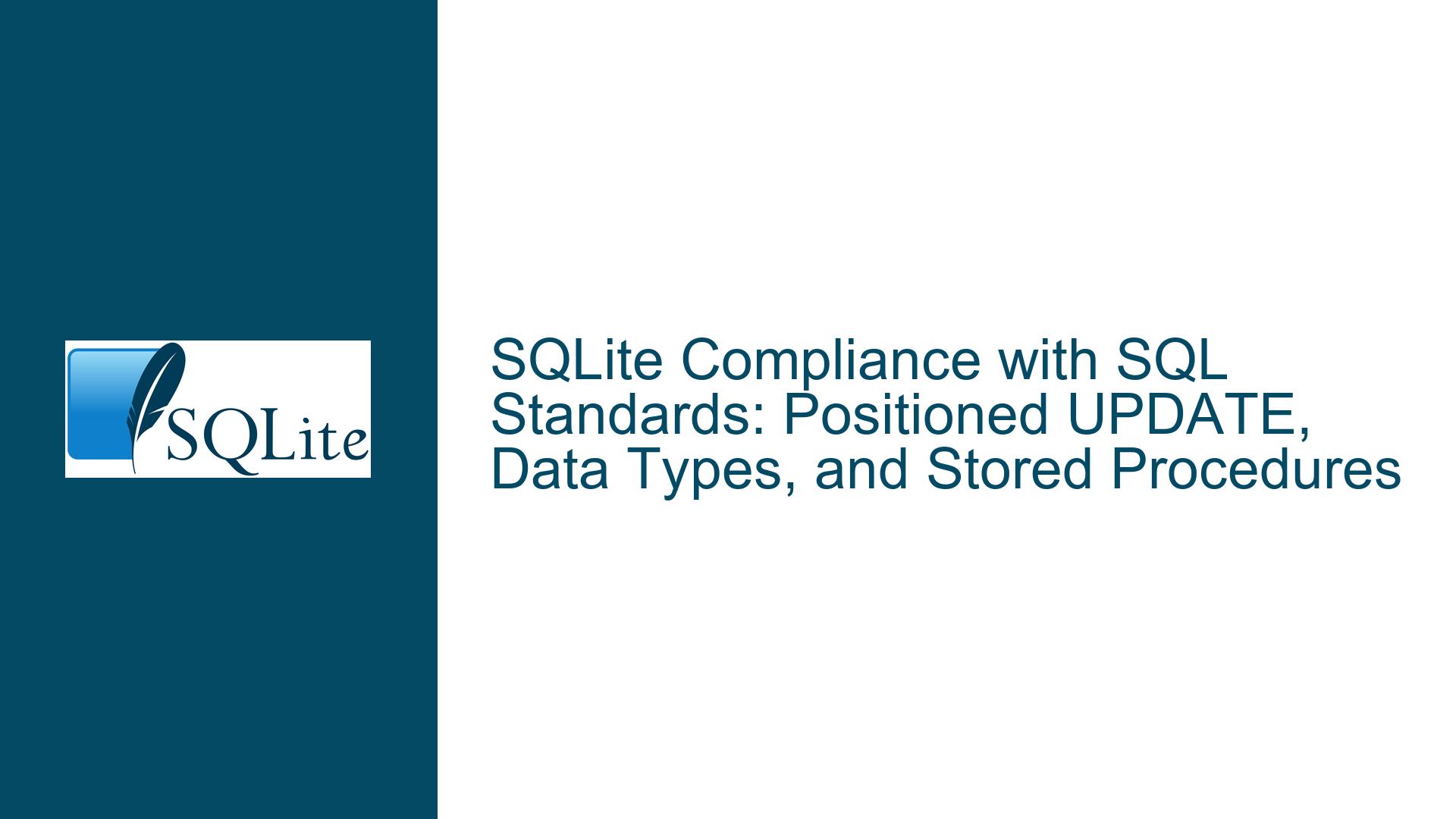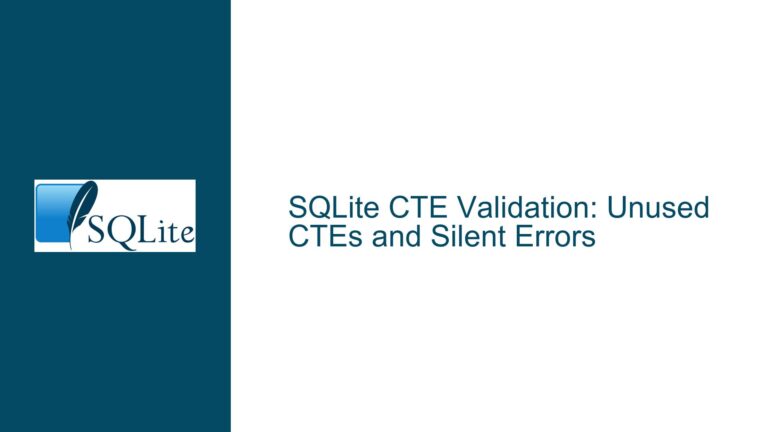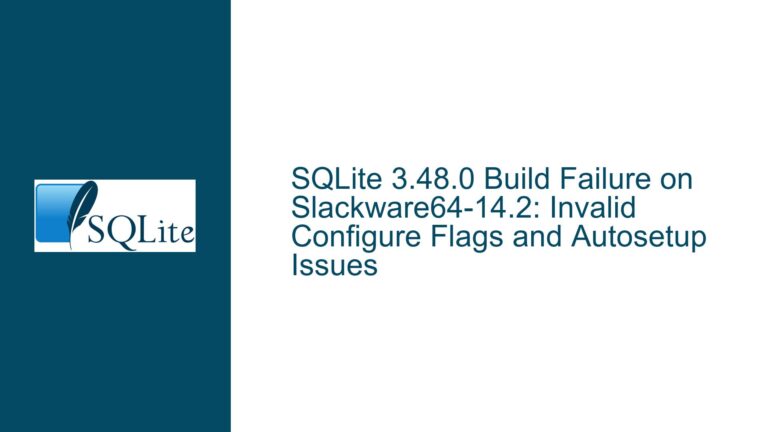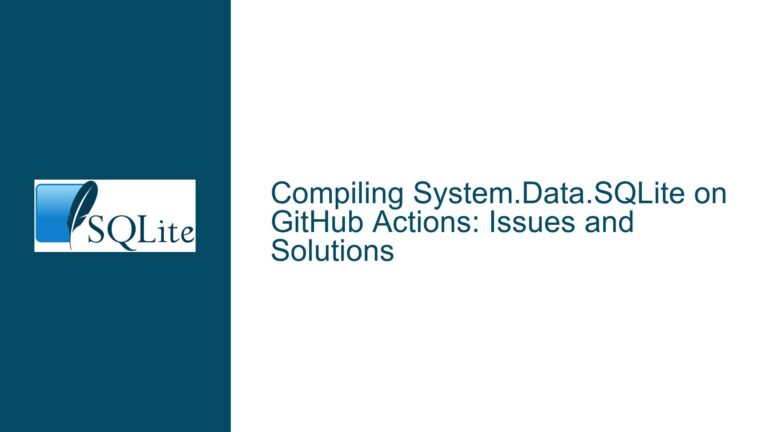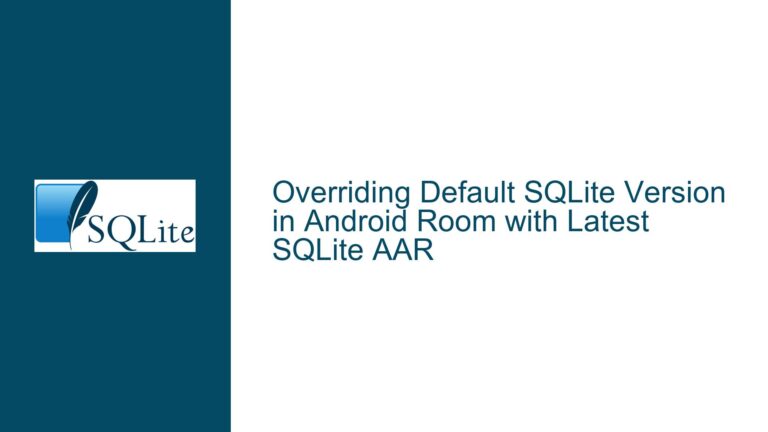SQLite Compliance with SQL Standards: Positioned UPDATE, Data Types, and Stored Procedures
Positioned UPDATE Statements and SQLite’s Partial Compliance
A Positioned UPDATE statement, as defined by the SQL:2008 standard under feature E121-06, allows for the modification of one or more columns in the current row of an open, updatable cursor. This feature is particularly useful in scenarios where a cursor is iterating through a result set, and updates need to be applied to the current row without closing the cursor. The syntax and behavior of this feature are well-defined in the SQL standard, but the implementation details can vary across different database systems.
In SQLite, the concept of a Positioned UPDATE is not directly supported. SQLite does not provide a mechanism to update the current row of an open cursor explicitly. However, SQLite does support cursor-based operations through its API, which allows for similar functionality to be achieved programmatically. For instance, when using the SQLite C API, a developer can fetch a row using a cursor, modify the data in memory, and then execute an UPDATE statement to apply the changes. While this approach achieves a similar outcome, it does not strictly comply with the SQL standard’s definition of a Positioned UPDATE.
The lack of direct support for Positioned UPDATE in SQLite can be attributed to its design philosophy, which prioritizes simplicity and lightweight operation over full compliance with complex SQL standards. SQLite’s primary use case is as an embedded database, where the need for advanced cursor operations is less common compared to server-based databases like Oracle or SQL Server. Therefore, while SQLite does not fully comply with the E121-06 standard, it provides alternative mechanisms that can be used to achieve similar results in most practical scenarios.
Ambiguities in SQL Data Types and SQLite’s Flexible Typing System
The SQL standard defines a variety of data types, including INTEGER, SMALLINT, CHARACTER, and CHARACTER VARYING, each with specific requirements and behaviors. However, the standard’s language can sometimes be ambiguous, particularly when it comes to "all spellings" of data types. For example, the standard mentions "INTEGER and SMALLINT data types (including all spellings)," but it does not explicitly list what those spellings might include. This ambiguity makes it challenging to determine whether a database system like SQLite fully complies with the standard.
SQLite’s approach to data types is notably flexible. In SQLite, any column can store any type of data, regardless of the declared type. This is known as "manifest typing," and it contrasts with the "static typing" used by many other SQL databases. For example, in SQLite, a column declared as INTEGER can store not only integer values but also text, blobs, or even floating-point numbers. This flexibility is both a strength and a weakness when it comes to SQL compliance.
When considering the E011 section of the SQL standard, which covers numeric data types, SQLite’s INTEGER type can be considered compliant with the standard’s requirements for INTEGER and SMALLINT. However, the standard’s requirement for "all spellings" of these types introduces uncertainty. For instance, does the standard include BIGINT and TINYINT as valid spellings of INTEGER? If so, SQLite’s INTEGER type, which is a signed 64-bit integer, would cover BIGINT but not TINYINT, which is typically an 8-bit integer. This partial compliance highlights the challenges of mapping SQLite’s flexible typing system to the rigid requirements of the SQL standard.
Similarly, the E021 section of the standard, which deals with character string types, presents further complications. SQLite treats CHARACTER and CHARACTER VARYING as the same type, which aligns with the standard’s requirement for implicit casting between fixed-length and variable-length character strings. However, the standard also specifies functions like CHARACTER_LENGTH and OCTET_LENGTH, which SQLite does not provide. While SQLite’s LENGTH function can be used to achieve similar results, the absence of the standard-mandated functions means that SQLite cannot be considered fully compliant with this part of the standard.
Stored Procedures and SQLite’s Alternative Mechanisms
Stored procedures are a key feature of many SQL databases, allowing developers to encapsulate complex logic within the database itself. The SQL standard, under feature T321, defines the requirements for basic SQL-invoked routines, including stored procedures. However, SQLite does not support stored procedures in the traditional sense. This lack of support is a significant deviation from the SQL standard and is often cited as a limitation of SQLite.
Despite this, SQLite provides alternative mechanisms that can be used to achieve some of the same goals as stored procedures. One such mechanism is the use of INSTEAD OF triggers. An INSTEAD OF trigger allows developers to define custom logic that is executed in place of an INSERT, UPDATE, or DELETE operation on a view. While this is not the same as a stored procedure, it can be used to encapsulate complex logic within the database.
Another alternative is the use of user-defined functions (UDFs) in SQLite. UDFs allow developers to extend SQLite’s functionality by writing custom functions in C or other programming languages. These functions can then be called from SQL statements, providing a way to implement complex logic that would otherwise require stored procedures. However, UDFs are not part of the SQL standard, and their use does not contribute to SQLite’s compliance with the T321 feature.
The absence of stored procedures in SQLite is a deliberate design choice, reflecting its focus on simplicity and minimalism. Stored procedures are more commonly used in server-based databases, where they can help reduce network overhead by executing complex logic on the server side. In contrast, SQLite is typically used in embedded scenarios, where the database and application run on the same machine, reducing the need for stored procedures. While this design choice limits SQLite’s compliance with the SQL standard, it also contributes to its lightweight and easy-to-use nature.
Conclusion: Balancing Compliance and Practicality in SQLite
SQLite’s approach to SQL compliance is shaped by its design philosophy, which prioritizes simplicity, flexibility, and practicality over strict adherence to the SQL standard. While this approach allows SQLite to excel in its primary use cases, it also results in partial compliance with certain features of the SQL standard, such as Positioned UPDATE statements, data type spellings, and stored procedures.
For developers working with SQLite, understanding these limitations is crucial. While SQLite may not fully comply with every aspect of the SQL standard, it provides alternative mechanisms that can be used to achieve similar results in most practical scenarios. By leveraging SQLite’s strengths, such as its flexible typing system and support for user-defined functions, developers can overcome many of the limitations imposed by its partial compliance with the SQL standard.
Ultimately, the decision to use SQLite should be based on a careful consideration of the specific requirements of the application. For applications that require full compliance with the SQL standard, a more feature-rich database system like PostgreSQL or MySQL may be a better choice. However, for applications that prioritize simplicity, lightweight operation, and ease of use, SQLite remains an excellent option, despite its partial compliance with the SQL standard.
